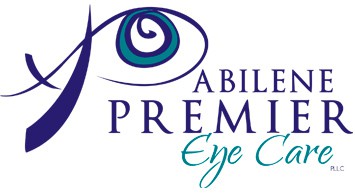Dry eyes is an extremely common disease, and it often goes undiagnosed and untreated. Studies estimate more than 16 million Americans have dry eye disease, and it affects twice as many women as men. Over 18.6% of adults aged 75 years and older experience the chronic condition.
Causes
Dry eye occurs when there is insufficient lubrication of the eye, resulting in lack of moisture and clear vision. Lubrication of the eyes is dependent on the tears produced from the tear film, a part of the cornea made of water, mucus and oil layers. When the tear glands in the tear film cannot produce sufficient or high quality tears, this leads to dry eye disease, along with an increased risk of eye infection and more foreign matter in the eye.
According to numerous studies, dry eye syndrome can develop as a result of various risk factors. Certain prescription medications can cause dry eye disease, such as antihistamines, decongestants, blood pressure medications, antidepressants, and birth control pills. Dry eye disease can be a result of other medical conditions as well, including lupus, rheumatoid arthritis, diabetes, and thyroid disease. Environmental conditions can also cause dry eye, such as being in a dry air conditioning climate, or a lack of blinking from watching digital devices. All of these can contribute to problems with the tear film
Symptoms
If you have experienced any of these symptoms, you could have dry eye syndrome:
- Redness
- Inflammation
- Itchiness
- Pain or burning
- The feeling of a foreign body in your eye
- Mucus discharge
- Discomfort when wearing contact lenses
- Light sensitivity
- Excessive tearing
- Blurred vision
Any symptom of dry eye syndrome can often last weeks or months at a time. Studies show that occasionally, these symptoms can improve on their own without treatment, but they typically return.
Treatment
In order to diagnose dry eye disease, an eye doctor will ask about your medical history and perform an eye exam to inspect your cornea, the interior of your eye, your tear ducts and how you blink. The eye doctor will also measure the quality of your tear film through tests using bright light, magnification and measurement of the quantity and quality of tears.
Once diagnosed, the eye doctor will recommend common treatment options based on the severity of the condition. If it is a mild case of dry eye disease, the doctor will likely recommend using lubricating drops, such as artificial tears, up to four times a day.
If you are experiencing more severe dry eye disease, you maybe given prescription eye drops or inserts to reduce inflammation. These eyedrops stimulate natural tear production to keep eyes moist and healthy. Steroid eyedrops can also be used for a short period of time to decrease eye inflammation more quickly.
Your eye doctor will likely also encourage increasing your omega-3 fatty acids intake from fish oil to reduce dry eyes. If you are experiencing a dry eye disease symptom as a result of medication, your doctor might recommend considering medication adjustment. Increased blinking and breaks from digital devices usage can also help reduce any dry eye symptom. You should always keep your eyelids clean to help reduce eye inflammation in your glands and encourage production of tears. You should also stop use of contact lenses as part of treatment.
Experiencing dry eye syndrome? Contact Abilene Premier Eye Care for an eye exam today to explore your dry eye treatment options.
Reference: American Journal of Ophthalmology,

